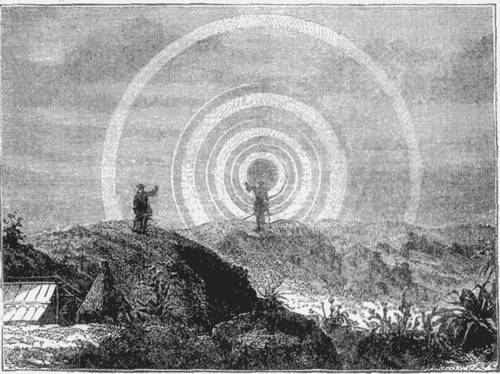
French astronomer Camille Flammarion writes of a curious optical phenomenon in Wonders of Earth, Sea And Sky (1902):
Ulloa, being in company with six fellow-travellers upon the Pambamarca at daybreak one morning, observed that the summit of the mountain was entirely covered with thick clouds, and that the sun, when it rose, dissipated them, leaving only in their stead light vapors, which it was almost impossible to distinguish. Suddenly, in the opposite direction to where the sun was rising, “each of the travellers beheld, at about seventy feet from where he was standing, his own image reflected in the air as in a mirror. The image was in the centre of three rainbows of different colors, and surrounded at a certain distance by a fourth bow with only one color. … All these bows were perpendicular to the horizon; they moved in the direction of, and followed, the image of the person they enveloped as with a glory.”
“The most remarkable point was that, although the seven spectators were standing in a group, each person only saw the phenomenon in regard to his own person, and was disposed to disbelieve that it was repeated in respect to his companions,” Flammarion writes. “The same apparition was observed in the polar regions by Scoresby, and described by him. He states that the phenomenon appears whenever there is mist and at the same time shining sun.”
